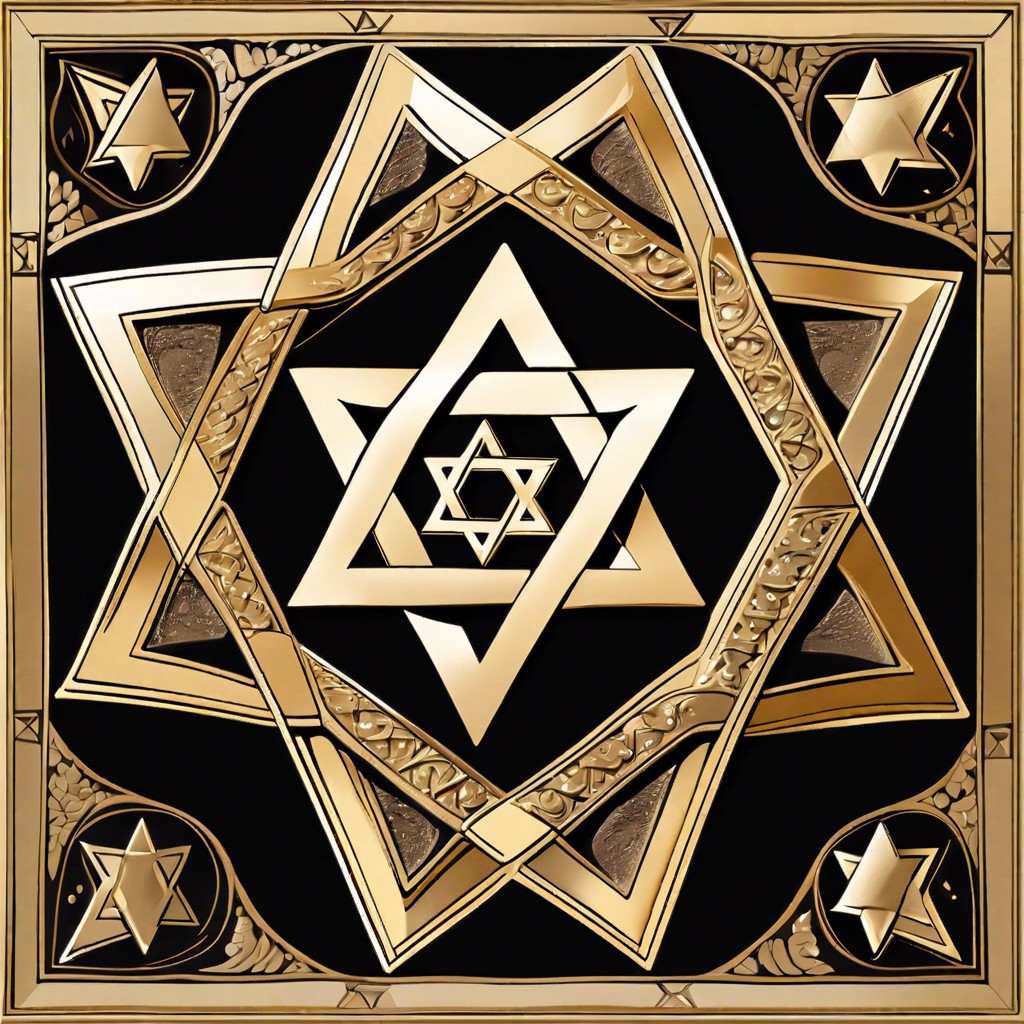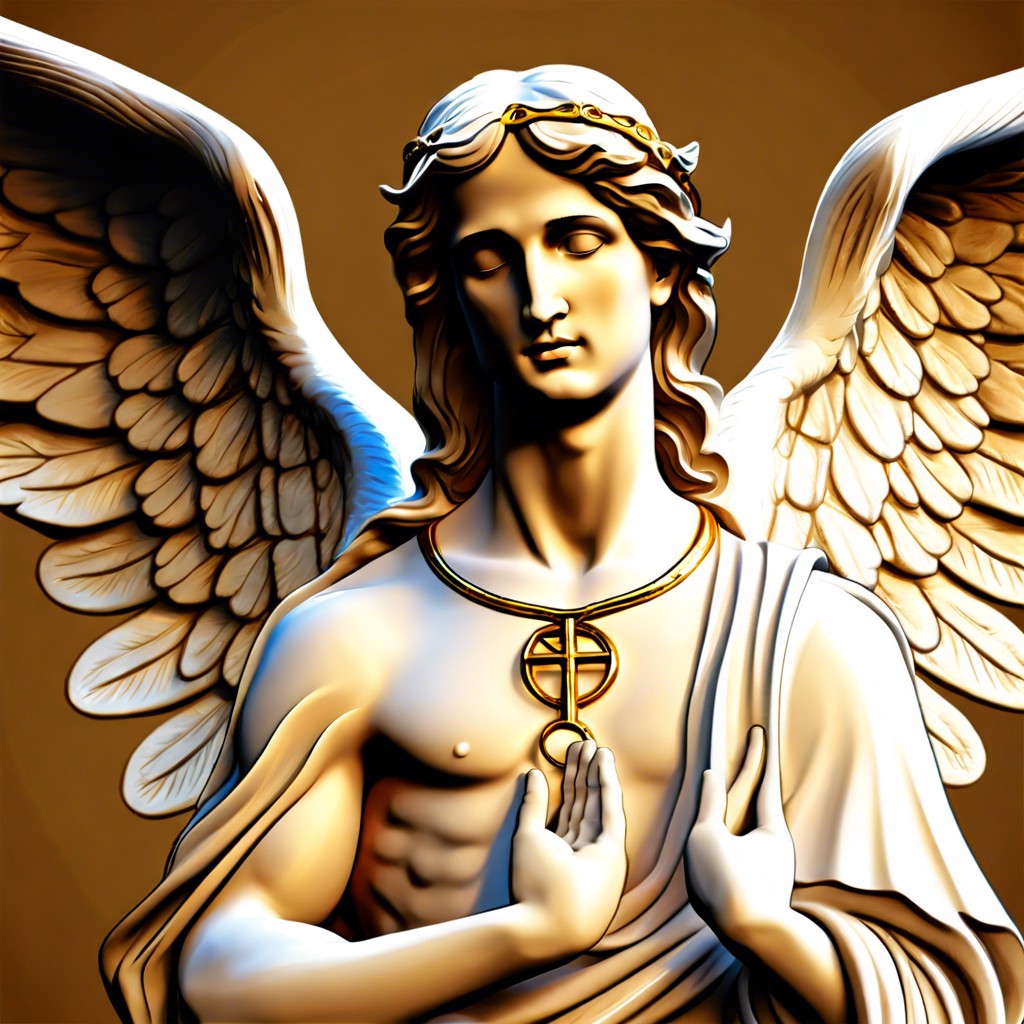Discover the profound spiritual significance and multifaceted symbolism of the Star of David.
The Star of David, a symbol deeply embedded in Jewish identity and lore, invites curiosity from many corners of the world. This article will explore its historical origins, delve into varied interpretations, illuminate its religious and cultural significance, and examine its contemporary representation.
Key takeaways:
- Star of David: Historically linked to ancient cultures, adopted by Jews.
- Symbolism: Represents unity, balance, interplay of divine forces.
- Religious Significance: Divine protection, omnipresence, Jewish identity symbol.
- Cultural Contexts: Extends beyond religion, used in art, politics.
- Modern Usage: Flag of Israel, fashion, education, art representation.
Historical Origins

Emerging in antiquity, the six-pointed star has intriguing beginnings. Linked to ancient Mesopotamian and Egyptian cultures, it wasn’t initially exclusive to Jewish tradition.
By the medieval period, it started appearing in Jewish texts, sometimes representing the shield of King David. However, it wasn’t uniformly recognized.
In the 17th century, the symbol became firmly associated with Jewish identity. During this period, Jewish communities in Prague began incorporating it into synagogue designs and on official seals.
Symbolism and Interpretations
The six-pointed star is rich in meaning. Each of its points can symbolize different concepts and elements.
First, the star represents the connection between divine and earthly realms. The upward triangle points to the heavens, while the downward triangle reaches toward the earth.
Second, the overlapping triangles embody harmony and balance. They show the unity between opposing forces such as male and female, fire and water, or spirit and matter.
Third, in the practice of Kabbalah, a form of Jewish mysticism, the star reflects the interplay between God’s justice and mercy.
These interpretations highlight the star’s profound depth, resonating across different philosophies and beliefs.
Religious Significance
In Judaism, the Star of David holds profound religious significance. It’s often used as a symbol of divine protection and connection to the Jewish identity.
Firstly, the star is composed of two interlocking triangles. These triangles are thought to represent the relationship between God and humanity. One points upwards toward the heavens, while the other points downwards toward the earth.
Also, many believe the six points of the star signify God’s rule over the universe in all six directions: north, south, east, west, up, and down. This encapsulates the omnipresence of the divine.
The Star of David is prevalent in religious artifacts, synagogues, and even used in ceremonial objects. Its consistent presence underscores its importance in Jewish spiritual life.
Lastly, it has also come to symbolize martyrdom and heroism, especially after its use during the Holocaust. This has imbued the symbol with a deeper sense of communal memory and endurance.
Cultural Contexts
Throughout history, the Star of David has found significance beyond just religious contexts. It is widely recognized as a symbol of Jewish identity, but its cultural reach extends further.
In medieval Europe, the symbol appeared in various forms of art and architecture. It wasn’t limited to Jewish communities; it was sometimes used by other groups as well. During the Renaissance, alchemists and occultists adopted it, seeing it as a representation of the harmony between opposites.
In the realm of politics and social movements, the Star of David has also made its mark. It appears on the flag of Israel, signifying national pride and unity.
Additionally, the symbol frequently shows up in modern culture, from literature and films to fashion and tattoos. For many, it represents not just a faith, but a heritage deeply interconnected with a complex history.
Modern Usage and Representation
Today, the Star of David is widely recognized in various contexts. It features prominently on the flag of Israel, symbolizing Jewish identity and unity.
In fashion, it appears in jewelry and clothing, often embraced for its cultural significance or aesthetic appeal.
In education and communal institutions, it is a common emblem seen in synagogues, schools, and community centers, representing heritage and tradition.
Artists and activists use the symbol in their works, conveying messages of resilience, faith, and continuity. It’s a versatile emblem, rich with historical layers yet adaptable to modern expressions.





